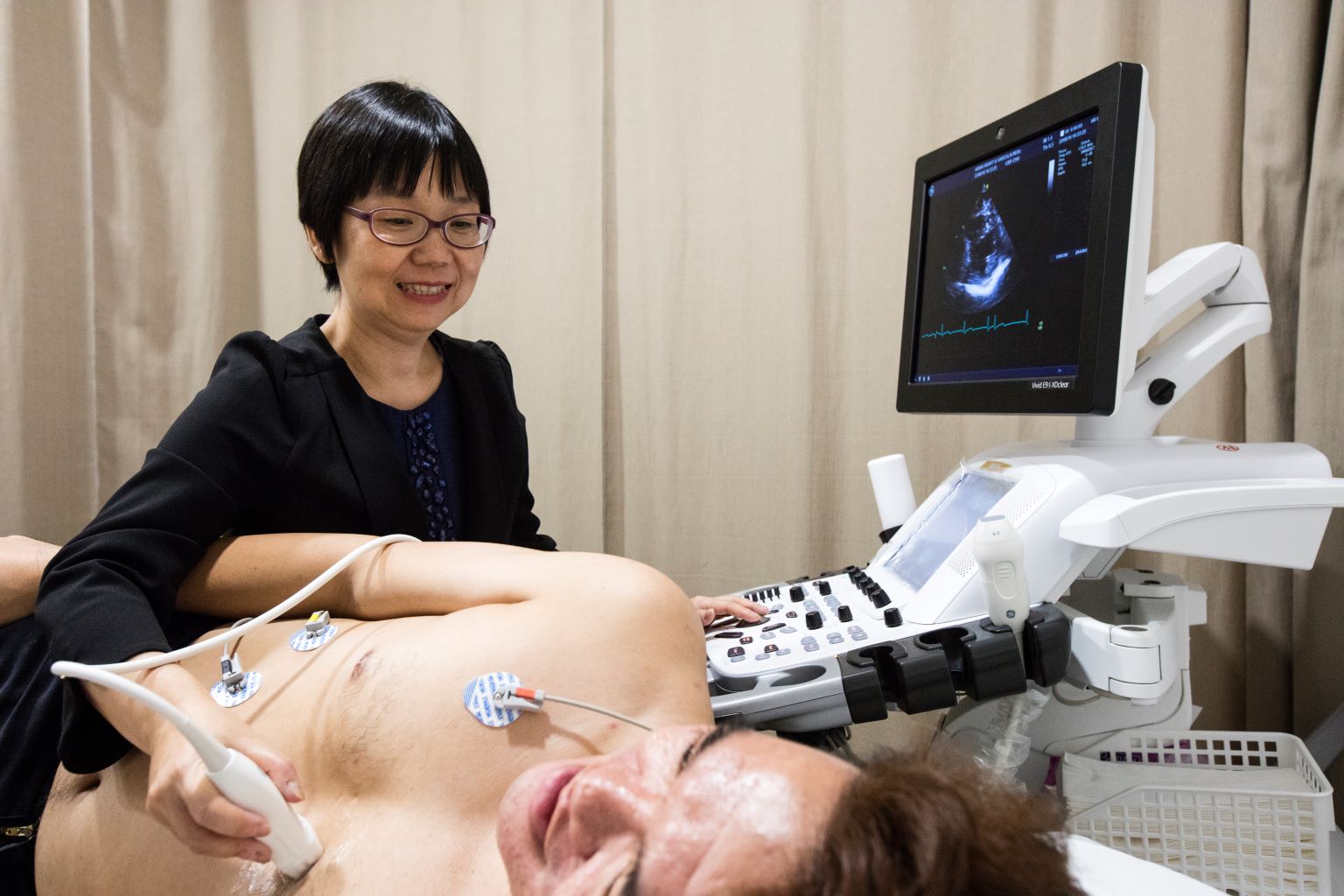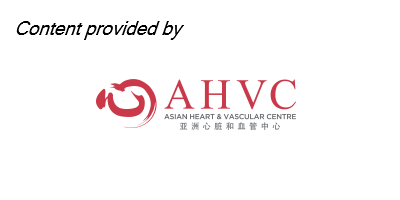BRANDED CONTENT
What causes heart valve disease and the non-invasive treatments available
Chest pain, breathlessness, fatigue and palpitations are all signs of a valve defect which can be treated in less invasive ways today instead of traditional open-heart surgery, says cardiologist Edgar Tay

The first step in detecting valve defects is using a stethoscope to listen to turbulence in the blood flow, which generates sounds called murmurs. PHOTO: ASIAN HEART & VASCULAR CENTRE
Follow topic:
Heart valves are gate-like mobile structures that control the flow of blood in the heart. Your heart is expected to produce three billion beats in a lifetime, which means these moving parts undergo wear and tear and can deteriorate over time. Sometimes, valve defects can also be present from birth.
The heart has four main valves. Two operate on the right and two on the left. Valves can fail in two main ways. Sometimes, they are unable to open properly – this is also known as narrowing or stenosis. Other times, they can cause a back leak of blood called regurgitation or insufficiency.
When the valves start to deteriorate, blood flow patterns in the heart become turbulent. This causes the heart to pump ineffectively, which leads to heart failure.
Heart valve disease may not always be easy to spot. In fact, it is common for people with heart valve disease to be asymptomatic for a long time. However, as it worsens, your heart beats harder to make up for the reduced blood flow, putting it under strain and causing symptoms such as chest pain, breathlessness, fatigue or palpitations.
Doctors can diagnose valve defects with their stethoscope as the turbulence in the blood flow often generates sounds called murmurs. This is then confirmed through an echocardiogram, a diagnostic procedure which uses ultrasound to take moving pictures of the heart and its related structures such as the valves.
From these pictures, your doctor can measure the size of your heart chambers, study the motion of the heart valves, assess the efficacy of the contraction of the heart muscle, and evaluate the blood flow pattern across the valves and within the heart chambers. Your doctor will then be able to determine how well your heart is working, whether there are abnormalities, and what treatments can be offered.
Common heart valve conditions and treatment options
Aortic valve
Aortic stenosis occurs when the aortic valve becomes stiff and narrowed. This makes it harder for the heart to pump blood out. At the moment, there are no medications that can successfully treat this condition. And leaving severe stenosis untreated can reduce survival rate by one to two years.
You can replace a narrowed aortic valve that fails to open properly with open-heart surgery or transcatheter aortic valve implantation (Tavi), a less invasive method. Advanced imaging is done to evaluate each patient and provide a tailored treatment plan.
For the Tavi procedure, the doctor will insert a catheter into your leg and guide it to your heart to perform the surgery, which usually involves sedation and local anaesthesia. Recovery takes days instead of the usual weeks or months when you go through open-heart surgery.
Tavi is effective in reducing heart failure and improving a patient’s quality of life. It can also help those who have had previous valve surgery and whose surgical valves have become worn out and are unable to work properly. Tavi can restore function to these valves.
Patients who are found to be unsuitable for Tavi, such as those with unsuitable anatomical conditions such as obstructed leg blood vessels or coronary arteries that are at high risk of occlusion, can still undergo open-heart surgery.

Mitral valve regurgitation
Mitral valve regurgitation, or “leaking mitral heart valve”, occurs when the mitral valve does not close completely, causing blood to flow back in the opposite direction, or back into the atrium ( upper chamber of the heart). This means that oxygen-rich blood returning from the lungs to the heart faces a restrictive force. Patients often complain of breathlessness and a rapid heartbeat, and have problems exerting.
Treatment options include conventional open-heart surgery which is done by repairing the valve or replacing it with an artificial heart valve. There is also a less invasive method called transcatheter mitral valve repair treatment. It is a good alternative for those who are at high risk for surgery and especially effective in those who have heart failure.
During the procedure, the doctor will repair the leaking heart valve by attaching a special clip to the mitral valve to tighten it and reduce leakage. This clip ensures the heart valve closes more effectively, which improves normal blood flow through the heart. This procedure has undergone rigorous trials and is shown to be effective.
“This procedure is dependent on the valve anatomy and on echocardiographic screening,” says Dr Tay. “Patients who have certain conditions like infected heart valves or narrowed mitral valves from rheumatic fever may not be suitable for it. Recovery takes about a week.”
Tricuspid regurgitation
The most chronic condition in this list of valve conditions, tricuspid regurgitation, occurs when the tricuspid valve does not seal tightly enough, which causes backflow of blood in the opposite direction. This results in a significant amount of blood volume re-entering the right atrium and raising the pressure in the chamber.
Tricuspid regurgitation can lead to distension of the veins and fill the organs with fluid. Symptoms include a palpitating vein in the neck which is visible, swelling of the legs and abdomen, and in the later stage, liver and renal failure.
Surgery has been associated with high mortality rates so tricuspid regurgitation was termed “the forgotten valve” as apart from giving medication, there was little that could be done to treat patients. Doctors usually prescribe diuretics or water pills to flush out the fluid build-up.
In May 2023, a trial was performed to compare the use of a clip-like device which works to clip the leaflets of the tricuspid valve to reduce back leak. The documented improvements seen in the trial include improvements in objectively measuring quality of life health scores.
An alternative treatment is TricValve, also known as the transcatheter bicaval valve system. This minimally invasive procedure is ideal for patients who are at high risk or unsuitable for open-heart surgery.
During the procedure, two bioprosthetic valves are placed in the venous system to reduce the backflow of blood and pressure on the other organs in the body. There are also newer valves being developed which can be implanted by transcatheter techniques.



